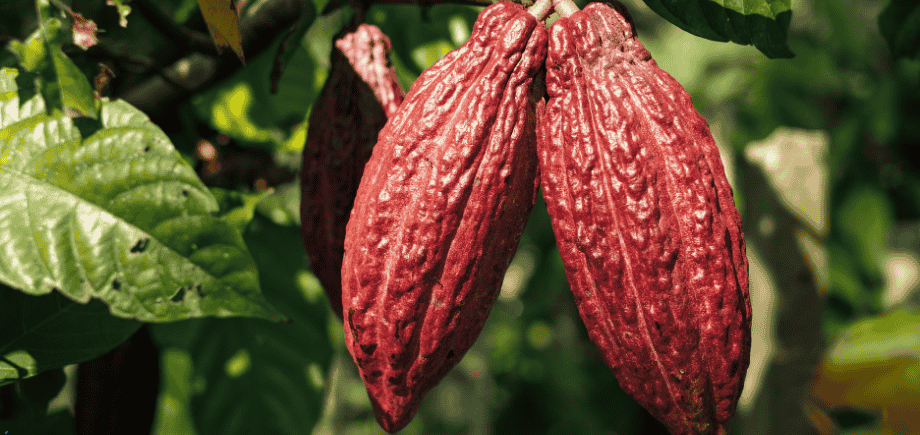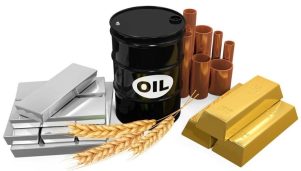Closing the trading session, the price of Arabica coffee for May contract slightly decreased by 0.05%, while the price of Robusta coffee closed at 5,336 USD/ton, down 0.11%.
In the industrial raw materials market, cocoa prices unexpectedly jumped to a one-month high due to concerns about declining supply, and the price of April 3 coffee decreased slightly. On the other hand, oil prices also unexpectedly turned sharply up due to the impact of short-term shortages. This morning (April 3), Vietnam time, US President Donald Trump announced the imposition of reciprocal tariffs on 185 countries and territories. It is expected that in today’s trading session, world commodity prices will fluctuate strongly.
Coffee prices slightly decreased on April 3, cocoa prices climbed back to the highest level in a month
At the end of yesterday’s trading session on April 2, green and red colors intertwined on the price list of industrial raw materials. Cocoa has attracted the attention of investors when leading the upward trend of the entire market.
Closing, the price of cocoa for May contract increased sharply to over 9,168 USD/ton, up 9.67% and reaching the highest level in a month. This is the second consecutive increase with a total increase of nearly 13.5% compared to the closing price on March 31, reflecting the positive sentiment of the market in response to fundamental information.
The outlook for global cocoa supply is becoming less optimistic as the mid-season harvest in West Africa, the world’s largest cocoa producing region, recorded many signs of decline. Late rains have limited crop development in Ivory Coast and Ghana, according to a report from Rabobank.

Recent surveys of farmers in the region have also shown disappointing results. The average production estimate for this year’s mid-season crop in Ivory Coast, the world’s largest cocoa producer, is just 400,000 tonnes, down 9% from last year’s 440,000 tonnes. Although Ivorian government data released on Tuesday showed that farmers shipped 1.44 million tonnes of cocoa to ports between October 1 and March 30, up 11% from the same period last year, the increase was significantly lower than the 35% increase recorded in December.
Meanwhile, in the coffee market, the price of Arabica coffee on April 3, the May contract decreased slightly by 0.05%, while Robusta coffee closed at $5,336/ton, down 0.11%. This development reflects the market’s adjustment after previous volatile sessions.

According to statistics from ICE, Arabica inventories as of April 2 reached 777,263 bags, remaining low but not much changed compared to the previous week. Meanwhile, Robusta inventories decreased slightly from a 7-week high of 4,414 lots (March 25) to 4,342 lots.
In the domestic market, April 3 coffee prices in the Central Highlands recorded an upward trend. The purchase price recorded this morning was around 132,200 – 133,500 VND/kg, down about 300 VND/kg compared to yesterday. Specifically, coffee prices in Dak Lak and Gia Lai reached 133,400 VND/kg; Dak Nong recorded the highest price of 133,500 VND/kg; while Lam Dong had a lower price of 132,200 VND/kg.
Oil prices rise sharply despite demand concerns
Oil prices unexpectedly turned higher in the trading session on April 2, despite concerns about future oil demand. The impact of short-term supply shortages is still dominant as the market can feel the “shakes” from the announcement of reciprocal tariffs by the US President Donald Trump’s administration.
At the end of the session, Brent crude oil prices reached 74.95 USD/barrel, up 0.62%, while WTI crude oil prices increased 0.72% to 71.71 USD/barrel. This is the highest price of both types of oil since the beginning of March.
Currently, concerns about short-term supply shortages are still continuing after the US sanctions were announced targeting crude oil from Iran and Venezuela. According to estimates, oil exports from Venezuela in March decreased by 11.5% compared to the previous month.

Meanwhile, before implementing the plan to increase production in April and announcing a similar plan for May, OPEC+ has implemented measures to cut excess production beyond the quotas of many member countries. Kazakhstan is one of the countries most pressured by this decision, and the issue of production cuts here is expected to become the focus of discussion at the OPEC+ Ministerial Meeting taking place this week.
In addition, in March, OPEC+ reduced crude oil production to about 27.43 million barrels/day, down 110,000 barrels/day compared to the previous month. Nigeria was the largest contributor to this decrease, with production falling by about 50,000 barrels/day, mainly due to the fire on the Trans-Niger oil pipeline on March 19, which disrupted the system for 6 days.
In addition, global oil supplies are under further pressure from Russia as the government has ordered the closure of two of the three berths at the main oil export port of the Caspian Pipeline Joint Venture (CPC) in the Black Sea. This move could reduce oil exports via CPC by up to 700,000 barrels per day, significantly affecting regional supply.
However, yesterday’s price increase was strongly restrained by the prospect of a future decline in oil demand. President Trump announced a series of new reciprocal tariffs on imports from a series of major trading partners on the afternoon of April 2, local time.
As of 6:00 a.m. this morning, the market reacted strongly to this information in the trading session on April 3. WTI oil prices recorded a sharp drop of more than 2.5% and this downward trend is expected to continue until the end of today’s session.











